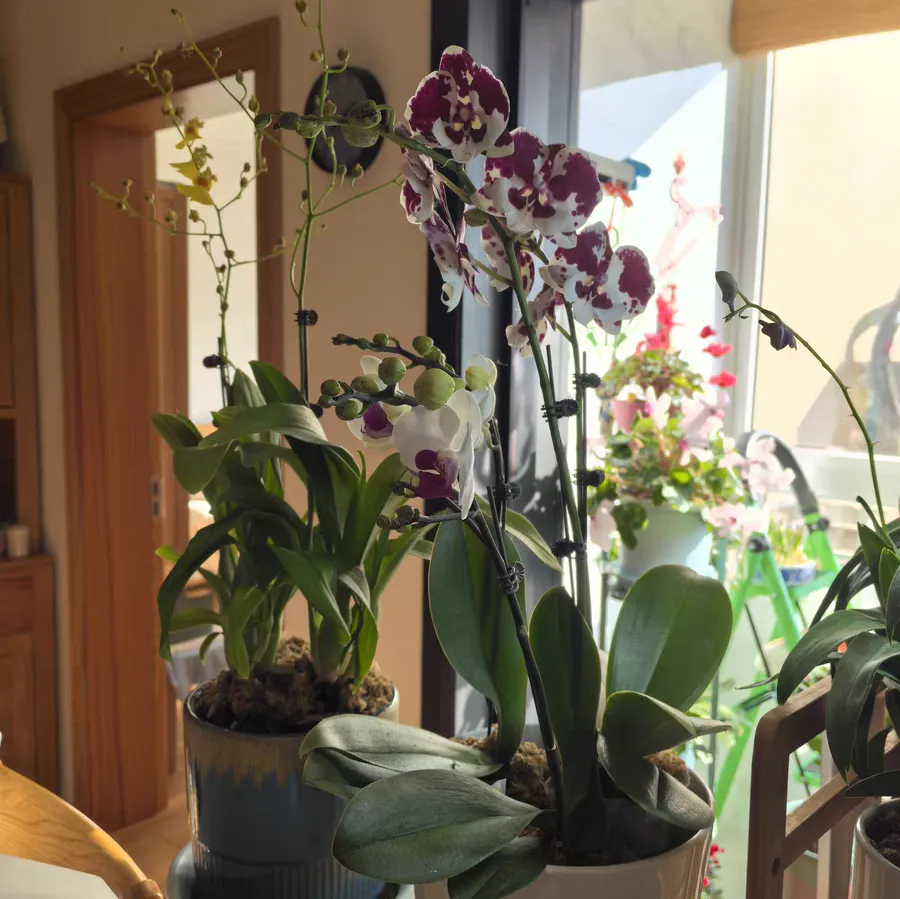In the busy urban life, don't you also long for a green and lush space? Today, I'd like to introduce a bamboo-like plant called "Rhapis excelsa". When it grows up, it is tall and straight, making you feel as if you were in a vibrant forest and rejuvenating the vitality that has been lost in the hustle and bustle.
Generally speaking, Rhapis excelsa is recommended to be placed beside the balcony or in the living room. Its leaves are broad in appearance, feel waxy to the touch, and look shiny. Therefore, if yellow leaves are found during later maintenance, the overall appearance will become rather obtrusive.
Then, why do the leaves of Rhapis excelsa turn yellow? There are mainly several aspects that haven't been done properly. Firstly, it prefers shade and shouldn't be exposed to light for too long. Usually, if it is placed in a place with intense sunlight for maintenance, its leaves are easily sunburned. As time passes, the leaves will turn yellow and fall off quickly. At this time, we should promptly cut off the yellowed leaves and immediately move it to a semi-shaded environment for maintenance. In the hottest summer when the sun is scorching, it is necessary to take appropriate shading measures for high temperatures, such as purchasing sunshade nets or placing it in a well-ventilated place.
Secondly, the yellowing of the leaves may be caused by improper watering. Rhapis excelsa likes sufficient water, but that doesn't mean giving it excessive water at one time. It is recommended that you can touch the soil with your hand. If it feels slightly dry, water it thoroughly right away. Never wait until the soil is very dry to water it, as the lack of water will also cause the leaves to turn yellow. Meanwhile, after watering, pay attention to whether there is water accumulation at the bottom of the pot. If there is, pour it out quickly, otherwise it will easily lead to root rot, and then the leaves will turn yellow. If you follow the principle of "watering when the soil is dry and stopping when it's wet" in daily maintenance, Rhapis excelsa will gradually recover soon.
Finally, the yellowing of the leaves of Rhapis excelsa may also be caused by improper fertilization. Although it likes thin fertilizers, if the concentration is too high, it will cause fertilizer damage. Instead, the roots will be damaged as a result. At this time, because the roots cannot breathe normally, they will eventually be unable to absorb nutrients and water smoothly, resulting in phenomena such as yellow leaves of the plant and inability to grow healthily. The correct way of fertilization is to first dilute it with water to form thin fertilizers and then spray it. If it is found to be too concentrated, you can immediately pour clear water to wash away the excess fertilizers.
Is Rhapis excelsa suitable for being cultivated at home?

Share with
Tagged in :




Leave a Reply